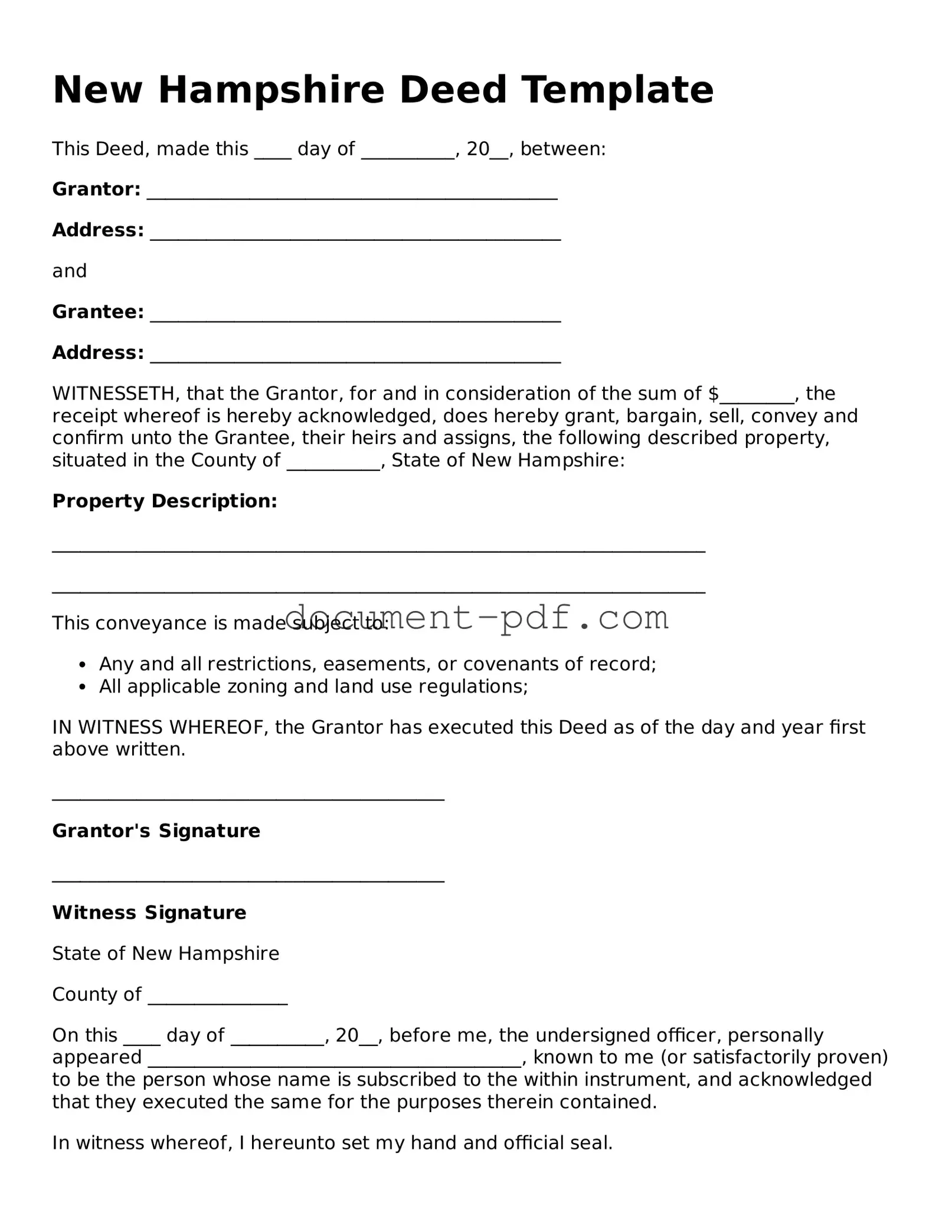New Hampshire Deed Template
This Deed, made this ____ day of __________, 20__, between:
Grantor: ____________________________________________
Address: ____________________________________________
and
Grantee: ____________________________________________
Address: ____________________________________________
WITNESSETH, that the Grantor, for and in consideration of the sum of $________, the receipt whereof is hereby acknowledged, does hereby grant, bargain, sell, convey and confirm unto the Grantee, their heirs and assigns, the following described property, situated in the County of __________, State of New Hampshire:
Property Description:
______________________________________________________________________
______________________________________________________________________
This conveyance is made subject to:
- Any and all restrictions, easements, or covenants of record;
- All applicable zoning and land use regulations;
IN WITNESS WHEREOF, the Grantor has executed this Deed as of the day and year first above written.
__________________________________________
Grantor's Signature
__________________________________________
Witness Signature
State of New Hampshire
County of _______________
On this ____ day of __________, 20__, before me, the undersigned officer, personally appeared ________________________________________, known to me (or satisfactorily proven) to be the person whose name is subscribed to the within instrument, and acknowledged that they executed the same for the purposes therein contained.
In witness whereof, I hereunto set my hand and official seal.
__________________________________________
Notary Public/Justice of the Peace
